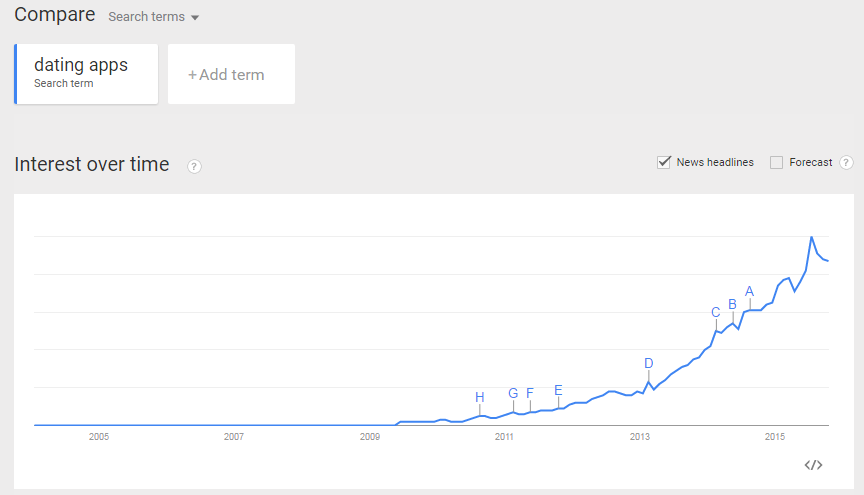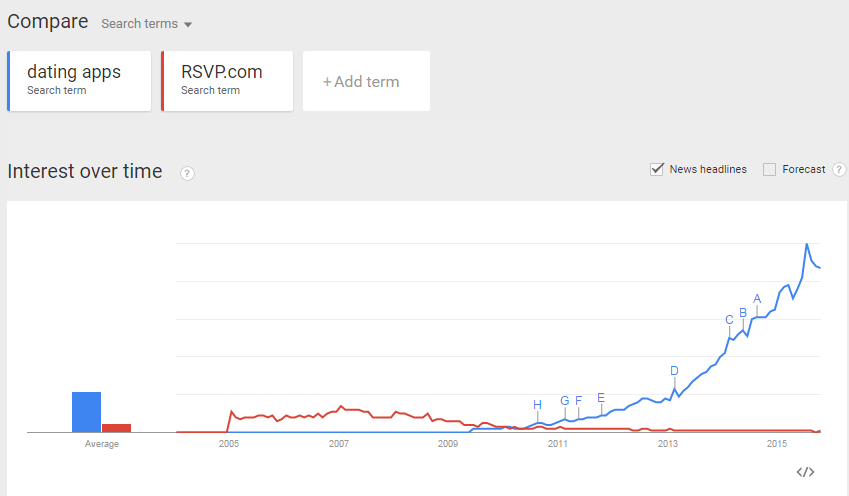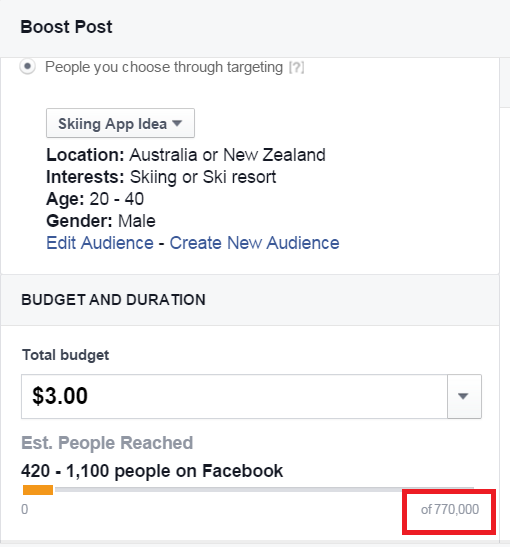The Smart Startup’s Guide To Estimating Market Size For An App
What’s the next step after coming up with a unique, exciting app idea?
Estimating market size is crucial for gauging if there is sufficient demand for your product to succeed.
This is where startups need to go away and do some preliminary research into whether their inspired idea is actually profitable.
It’s a step before idea validation, which is where you are actually gaining feedback from your target market that they want the app you are building.
Why estimating market size is tricky for tech startups
Technology is inherently revolutionary, so when introducing a new app to a market you might not have any direct competitors.
That is, there may not appear to be an existing market for your app.
Often the most successful apps have created the market as we know it.
Uber, Airbnb and Apple’s smartphone are all examples of totally first-of-their-kind ideas which would not have gone ahead had they focused too heavily on current market size in their validation process.
Faster horses and all that…(click here if you don’t know what I’m talking about).
Eventual market size > Current market size
It’s fantastic if there is an existing market for your product.
That makes proving your idea’s potential a lot easier, especially as you search for funding and investors.
However, the key to wooing investors isn’t current market size, it’s eventual market size.
Bonus: The Secret To Raising Venture Capital Investment
Your idea will not make an impact if it isn’t in a growing market – one that will churn out increasing amounts of revenue over the next 1-50 years at least.
That’s the key word here: Growth.
It’s OK if your market isn’t currently worth $1,000,000, 000 – You just need to make sure it isn’t shrinking.
Alright, glad we got that sorted.
Now I’m going to give you a set of steps to follow for estimating current and future market size for your app idea.
Step 1. Be critical of your idea
Never build a startup that solves a”nice to have fixed” problem. People will use your product but never pay for it.” – Mitchell Harper, Founder of Capital H Labs
Does your idea actually have profit potential?
Does it solve a problem that people frequently complain about (on a day to day basis, ideally?)
Think about some of the apps that you couldn’t live without. What makes them so irreplaceable?
The number 1 app that I couldn’t imagine life without right now is Audible.
I can now devour a book in a week just listening to Audible while I’m walking to and from work or doing mundane tasks that don’t require concentration.
I can’t imagine going back to wasting those 2-3 hours a day!
So, take a step back from your idea and be as objective as possible. Ask friends and family (and strangers) if they would pay for your product.
Step 2. Use Google Trends
Google Trends will show you if search volume relating to your idea’s keywords are increasing or decreasing.
Although not terribly scientific, this is good preliminary research to start sussing out if your target market is on an upward trend.
You can see below how a quick search on Google Trends for the keyword ‘dating apps’ shows this is something that people are searching for more and more.
Searches relating to RSVP.com? Not so much.
In fact, it’s flat lining as apps like Tinder have taken market share.
Note: Don’t take Google as gospel.
The one biggest caveat with Google Trends is that if your idea is designed to disrupt a stagnant industry, search volume for that industry is going to be pretty bleak!
Take Uber, which totally transformed the taxi industry.
The taxi industry was an absolute dinosaur, with processes that had changed little in the last 20 years!
The reason this industry was one of the last to be disrupted by technology was because technology wasn’t fully developed enough to improve the industry the way it needed to be improved.
It’s only in the last 5-8 years that apps have much improved functionality and levels of user adoption.
This gave Uber the ammunition it needed to develop a platform that would allow it to create a market for on-demand taxis.
In that case, eventual market size was much bigger than current. Although it would have been hard to prove that with Google Trends!
Step 3. Dig deeper
Hopefully Google Trends has established that either your industry and/or your customer pain point is one that is seeing a high amount of search traffic.
The next step is to find useful insights on the keyword you entered.
Google Trends breaks down search volume by location and related searches, as you can see from the interactive ‘dating apps’ example below.
You can also see the change in interest by region over time using an interactive scroll bar.
Yep, Google Trends is pretty fun.
Step 4. Facebook Ads
Facebook ads will show you estimated reach for your idea (assuming your target market is on Facebook, of course, but I don’t know anyone who uses apps who isn’t…)
Facebook’s ad tool is great because you can go really granular into your target market’s demographics, interests and behaviours.
For example, you may have an app idea for a target market you see as being male, 20-40 years old and interesting in skiing.
You can input this information into Facebook’s ad campaign tool or post boosting tool like I have below.
Facebook requires you to set a budget first, but just put in a dummy variable and concentrate on the number I’ve outlined in red – that’s the total estimated people in your market according to Facebook’s data.
Now, I’d personally be shooting for no less than 1,000,000 potential customers.
If your estimated market size is smaller than you were hoping for, it’s a sign that you should consider diversifying your product offering or positioning.
What if your app was targeted at men and women interested in skiing? Or men interested in not just skiing, but all snow sports including snowboarding and sledding?
A word on piggybacking:
You can also piggyback off existing brands to get an idea of how big your market is.
This is an especially useful tactic if your app is a complementary product or service, or if your target market is currently using an alternate brand to solve the problem that your app will solve.
Paypal originally piggybacked on eBay during their market analysis, and Airbnb piggybacked on Craigslist property listings.
The difference with their offerings is they looked at a market that was already prospering, and assessed where it could be made more niche (taking the same concept and applying it to an alternative market).
Step 5. Scour for government data and market research reports
These resources can show you hard figures on how your market is performing, which companies have market share and what opportunities and threats are suspected to have an impact in the next 5-10 years.
Australian Bureau of Statistics and census data is also invaluable for checking demographic statistics on your target market.
What % of the population is made up of people in your identified demographics, and how is that % expected to change in the upcoming years?
Some top resources to check out:
- Euromonitor Australia
- Passport
- Mintel
- Australian Bureau of Statistics website (ABS)
- Census Data
- Australian government websites
Some of these reports will cost a lot of money to download, but my top tip is to hit up any uni students you know!
Most of the big universities give their students free access to these reports for research purposes (they can access them just with their uni login details).
Step 6. Estimate customer value
Once you’ve established that your idea is profitable and there is a decent pool of customers who might be interested in paying for it (we’ll get to that later), the next step is to assess how much a customer is actually worth.
In app development, this is commonly referred to as Customer Lifetime Value (CLTV) and the goal is to continually increase it through engaging, fresh app content and fantastic customer service.
Thinking about your CLTV early can save wasted resources in the long run.
For example, if you build a premium product and you find out halfway through the development process that your target market is incredibly price sensitive, you’ve wasted time and money going back and re-positioning your app as a lower-end product.
How can you monetise the value of a customer?
The simplest way to do this is to figure out how much your customer is currently spending on the alternative solution to their problem.
This will manifest itself in different ways depending on your industry, target market and the problem itself.
If we were to take the Uber example again, they would have looked at the average $ amount spent by the average person per year on taxis in San Francisco (their launch city).
Admittedly, you probably can’t bet on 100% market penetration (owning every customer in your target market is a long term dream!) but at this early ideation stage, your idea might well diversify to serve different customer segments and locations.
This will boost your Total Available Market yet again.
Bonus: Validate your idea
Those last 6 steps were all about estimating market size, which is essentially a set of steps to help you make an educated assumption about your idea’s potential.
Now you know that there is a market for your app, but you don’t know if people in that market will actually be interested in using your app.
This is where idea validation comes in. We’ve made a detailed video about how to validate your idea, so make sure you check it out for further clarification.
Some fast takeaways:
- Build a landing page and collect emails from interested people.
You should also set up a free Google Analytics account to track the essential stats on your page – Where visitors are coming from, how much traffic you are getting over different time periods, etc.
2. Run an ad campaign through a network like Google Adwords.
Use keywords for competitors offering similar services to yours, and see how many hits you get.
3. Run a competitive analysis.
Competitors making a profit usually signify that there is a market for your app!
Run a competitive analysis to assess the likelihood that your app will be able to compete with the ones you’ve identified. How are you going to take market share off them?
The goal is to demonstrate hard proof that your idea has traction and profit potential. Investors love these stats as well.
WOW factor will get you through the door, but Australian investors are risk averse and are particularly interested in growth rate and cash flow.
Bonus: Template: 3-5 Year Financial Planning For App Startups
Well there you have it! These are the 6 steps to making the most accurate estimate of your market size you possibly can.
Let me know in the comments if you were surprised by your idea’s market size! Was it bigger or smaller than you expected?
You just read Part 1 of the Buzinga crash course How To Build An App: Moving Forward With Your App Idea
Go to Part 2: 5 Tips For Validating Your App Idea
Go to Part 3: How To Perform Competitive Analysis On Apps
Go to Part 4: How To Choose Your App Monetisation Model: 6 Key Questions
Go To Part 5: The 20 Minute, 1 Page Business Plan For Lean Startups
Latest posts by Logan Merrick (see all)
- Ep 18: Collective Campus’ CEO on Intrapreneurship and Corporate Innovation - December 20, 2016
- 50 User Engagement Strategies For Planning Memorable Mobile Experiences - December 19, 2016
- Latest Data: App Monetisation Trends And Drivers 2015-2020 - November 25, 2016










Pingback: 15 Fearless Australian Female Entrepreneurs Absolutely Killing It - Buzinga()
Pingback: 10 Step Guide To Giving A Pitch That Excites Investors()
Pingback: 4 Ways To Double Your App's Profits In 30 Days()